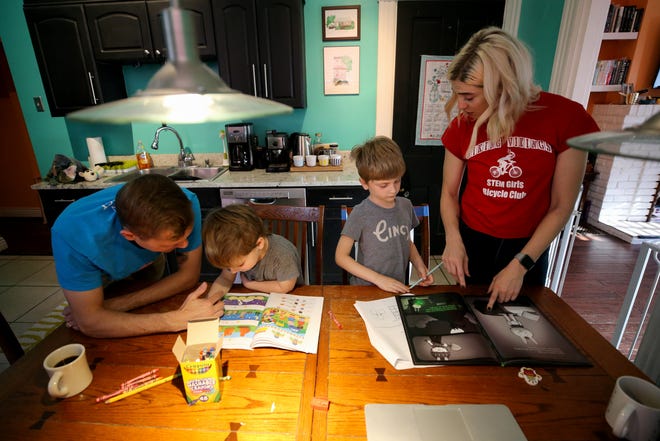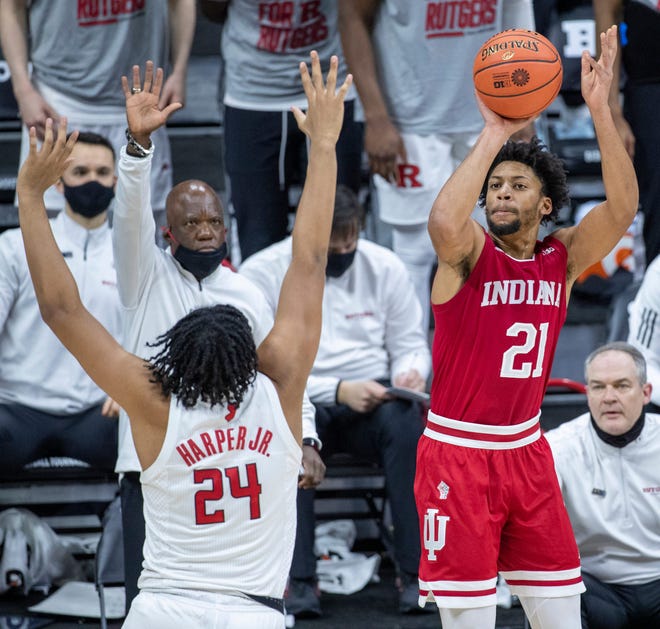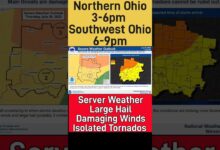

Cincinnati Public Schools’ hybrid learning model, which began for some elementary students on Feb. 2, effectively cuts two days’ worth of instruction time per week for each student.
The split model makes it easier to maintain proper social distancing in compliance with coronavirus safety recommendations. But some students and parents are concerned they could be left behind when it comes to advance placement (AP) tests, which earn students college credit and saves some thousands of dollars in tuition.
Kate Hilton, a senior at Walnut Hills High School, is taking six AP classes this year, some of which are “months behind” in terms of preparing for the AP tests in May. She doesn't fault her teachers, she says, who are "doing their absolute best."
“The detail of instruction and knowledge is not the same,” she said, comparing this year's classes to the six AP courses she took last year. “And I think this year they’re focusing on overarching themes versus getting into the tiny aspects of the material, which AP courses and College Board kind of expect you to know."
[ Sign up for the free Coronavirus Watch newsletter to get the latest news happening in Ohio, Kentucky and Greater Cincinnati. ]
Kate has committed to Rice University in Houston and will be heading there in the fall to study art history and neuroscience on the pre-med track. These AP tests reflect hours spent studying throughout the year, potentially an entire semester’s worth of college tuition saved and will directly impact her ability to study abroad as a university student.
Other parents worry their elementary schoolers may fall behind while trying to learn the fundamentals of math and reading.

What is 'student-led' instruction?
CPS serves about 36,000 students, including students in the Cincinnati Digital Academy, which is the only official fully-remote option CPS is offering at this time.
The hybrid model, outlined on the district’s website and discussed at board meetings, allows for half of each school’s students to be in school buildings Tuesdays and Wednesdays, and the other half to be in-person Thursdays and Fridays. Everyone is remote on Mondays.
The two days students are not at school receiving in-person instruction or virtual Monday lessons, they are basically on their own.
“No modules, no nothing. It’s 100% self-directed learning,” Kate's father, Jason Hilton, said.
A district spokesperson said these days are considered "student-led instruction" and will come in the forms of videos, problem sets, readings and projects.
"Teachers will provide work and then the students are expected to work on it," CPS board member Mike Moroski said of the two "off" days.
The district provided the following statement regarding the blended learning model: "The return to blended instruction, which includes in-person learning days, provides more robust academic and social-emotional supports."
How hybrid affects high schoolers
Liza Mintchik, a junior at Walnut Hills, says some of her teachers have told her to not pay the AP test exam fees yet because they are not confident they will get through all of the material necessary to do well on the tests. Unlike any other building in the district, Walnut Hills currently has no set time for starting hybrid instruction.
Liza said she is worried about her health if she were to go back inside the school building. She says the Cincinnati Digital Academy (CDA) is not an option for her because it doesn't offer some of her classes.
"It would be like throwing all of that work – hours and hours and hours of work – down the drain, completely," she said.
At Aiken High School, English teacher Malerie Schreiner says she has not had to cut parts of her traditional curriculum. The content is just different in general.
"It didn't really make sense to adhere to what we did last year because the year is different," Schreiner said.
She "blew up" her curriculum to reflect current events: students have reflected on the inauguration and contacted local elected officials. She says her students are doing well with this new curriculum in their virtual learning model, crushing learning goals and even moving from below their grade level to above their grade level in reading.
But each student is different and has different needs. Schreiner says she has students who are the "adult" in their household, and some who are homeless.
"Face-to-face learning provides those kids with a building to be in," she said. "However, if the building is not safe, is that better?"
Schreiner says instruction time is significantly reduced in a hybrid model. She knows from experience when the district temporarily went hybrid in the fall, and says she only saw about 20% of her students in-person at that time because some families did not feel comfortable sending their kids to school.
Many of her students stayed home and lost that instruction time, Schreiner said. And it is difficult for teachers to teach both online and in-person at once; those are two different jobs, she said.
Schreiner says schools and teachers have learned from the fall and she believes the hybrid model will be better. But it’s still a bad plan, she says. Each school in the district has different needs.
“There is no blanket plan that could fit CPS,” she said.
How hybrid affects younger students
Melanie Bates, a CPS board member with two grandchildren in preschool and first grade in the district, says the "off" days should be filled with homework, projects, information packets or other work dependent upon the school, teacher and program. The work should be equivalent to the hours a student would spend in the classroom.
She said her grandson "may actually get more one-on-one time over two days" than he has during the five days of remote learning.
That might not be the case at other schools, though, Bates said, especially in classes that focus on lectures.
Sarah Ohman is a single mother with a second-grade student, Jacob, at North Avondale Montessori. Her son was supposed to return with the hybrid model this week, but Ohman did not send him to school due to health and safety concerns.
Ohman plans to sign Jacob up for CDA but says enrollment is “backed up.”
“Now my son is, like, borderline school dropout,” Ohman said. “Because he just has his one day of instruction (on) Mondays, and then Tuesday, Wednesday, Thursday, Friday he’s just pulling his assignments that are online and then the ones that we have paper copies from a couple weeks ago.”
But CDA is not a good option for her son, either, Ohman says. Jacob is in a gifted program at North Avondale Montessori. He is used to getting individual attention and enrichment, learning material above the second-grade level.
Ohman says it’s too early to see the academic detriments of virtual or hybrid learning, but she is already starting to notice emotional and motivational problems with her son.
“He’s scared. He’s scared of getting (COVID-19), he’s scared of giving it to my father who he sees every day who’s 74 years old,” Ohman said. “He’s asked me crying, many times, ‘If Papa gets this, will he die? I don’t want Papa to die.’ You know? And then I’ll also get, he's an only child, so he’ll cry like, ‘I miss being around people’ or talking to people.”
Source link







